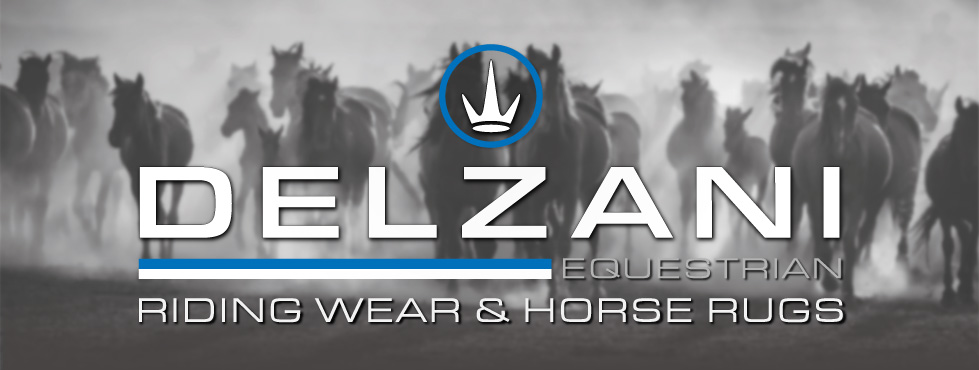Can Fly Masks Cause Sweating or Rubbing? What Australian Owners Need to Know

Understanding Why Fly Masks Can Cause Sweating or Rubbing - and How to Prevent It
Updated August 2025
A practical guide for Australian horse owners on preventing sweating, rubbing, and irritation from fly masks - covering correct fit, materials, and daily care routines to keep horses cool, protected, and comfortable in hot climates.
Fly masks are a staple in many Australian paddocks, protecting horses from flies, dust, and the harsh summer sun. But alongside the benefits, owners often worry about side effects: do fly masks cause sweating, rubbing, or irritation? The truth is they can, but almost always when the mask is poorly fitted, made from the wrong materials, or not cared for properly. With the right choice and a simple daily routine, masks remain one of the safest, most effective pieces of horse gear you can use.
What Are Fly Masks?
- Protective mesh cover: shields eyes, ears, and face from flies and dust.
- UV protection: prevents sunburn on sensitive skin, especially pink noses.
- Breathable fabrics: allow airflow while blocking insects.
- Adjustable straps: keep the mask secure without rubbing.
- Optional nose/ear flaps: add coverage in high-risk conditions.
Benefits for Australian Horses
- Reduce fly irritation and stress during summer turnout.
- Protect eyes from dust storms and sandy arenas.
- Shield sensitive skin from UV damage and sunburn.
- Ease head-shaking from midges and mosquitoes.
- Support comfort and coat health when paired with fly protection sprays.
Why Sweat Build-Up Happens
Horses regulate body temperature by sweating, and their faces are no exception. If a mask uses heavy or flat mesh that sits directly against the skin, heat and moisture become trapped. In Australia’s humid regions, particularly coastal Queensland and northern NSW, this can quickly lead to sweat scald or fungal irritation. A good mask avoids the problem with structured, open-weave mesh that stands clear of the face and allows constant airflow. Delzani’s designs use ballistic mesh that holds its shape, so sweat evaporates rather than collecting under fabric.
Preventing Rubs and Hot Spots
Rubs form where a mask moves or presses unevenly against the skin. The common culprits are under the jaw, behind the ears, and across the nose bridge. Owners sometimes think fleece-lined masks are the solution, but full fleece can actually trap heat and moisture. A smarter design uses strategic fleece padding only at contact points, keeping masks soft without compromising airflow. Fit also matters: straps should be firm enough to hold position but loose enough to slide a finger under comfortably.
Daily Care: The Habit That Prevents Problems
Even the best mask will rub if it’s dirty. Dust, burrs, and dried sweat in seams act like sandpaper against sensitive skin. The simplest prevention is a quick routine: shake out masks daily, rinse when sweaty, and rotate between two masks during peak summer. This ensures one is always clean and dry while the other is in use. Just as importantly, lift the mask and check your horse’s face at least once a day. A 30-second check saves weeks of treating sores.
When to Take Masks Off
Some horses wear masks from dawn till dusk without issue, but 24/7 wear isn’t always necessary. At night, insect pressure usually drops, and giving the skin a break can prevent rubs. On days of extreme heat, check more often to ensure sweat isn’t pooling. Flexibility is the safest approach: use the mask as a tool, not a permanent fixture.
Special Considerations for Australian Conditions
Australia’s climate throws unique challenges at horse owners. In humid coastal areas, breathable mesh is essential to stop heat build-up. Inland, dust storms and sandy arenas make eye protection just as valuable as fly control. Horses with pink noses and eyelids face another risk: sunburn and blistering. For them, a mask with a structured nose flap provides critical UV protection. In regions prone to midges and mosquitoes, enclosed ears can reduce head-shaking and secondary skin infections.
Do Certain Horses Struggle More?
Yes, just like people, horses vary. Sensitive-skinned horses, greys with pink eyelids, or those prone to Queensland Itch may need extra checks and shorter wear times. Horses in herd paddocks may also rub masks off on fences or play with each other’s gear. In these cases, supervision during the first few days of use is essential. Adjust fit, swap to different models if needed, and always treat active skin issues before reintroducing gear.
Why Delzani Masks Prevent Common Issues
Delzani’s fly mask range is engineered to balance protection with comfort. Structured domes keep mesh clear of the eyes, fleece padding prevents rubs, and ballistic mesh maintains airflow in hot weather. The adjustable straps hold the mask secure without overtightening, reducing slip and friction. With the right fit and daily care, Delzani masks prevent the sweat build-up and rubbing that frustrates many owners.
Frequently Asked Questions
Do fly masks make horses hot?
Not if they use breathable, structured mesh. Quality designs allow airflow and stop sweat build-up, even in humid conditions.
Can fly masks rub a horse’s face?
Only if they fit poorly or get dirty. Strategic padding and daily cleaning prevent rubbing and irritation.
Should horses wear masks overnight?
In most cases, daytime use is enough. At night, insect pressure drops, so removing masks gives the skin a break.
Protect Your Horse with Delzani
Don’t let heat or rubs put your horse off masks. Choose Delzani fly masks for breathable comfort, pair them with all-season rugs and fly protection, and enjoy the confidence of gear designed for Australian summers and sensitive skin.
Written by Jane Griffiths - An experienced Australian horse owner and product developer with over three decades immersed in equestrian life. Jane has spent years refining horse rugs, tack, and riding apparel to better suit Australian climates. She has enjoyed countless weekends at gymkhanas, show jumping events, and pony club competitions with her daughter, and still loves hitting the trails with friends whenever she can. Her lifelong passion for horses and hands-on understanding of equine comfort continue to shape her practical, rider-first approach to horse care and product design.
Related Equestrian Guides
Fly Masks & Fly Veils for Horses
Keep your horse calm, protected, and focused this summer with Delzani fly masks and veils, breathable comfort, Sun defence, and rider-trusted performance built for Australian conditions.
Do Horses Really Need Fly Masks and Bonnets in Australia?
Australian horses face harsh sun, dust, and insects. Fly masks and bonnets protect eyes, ears, and skin while improving comfort and focus. Learn when they’re essential and how to choose the best fit for your horse.
Fly Mesh Boots Troubleshooting & Care: Stop Slipping, Rubbing and Wear
Tired of fly boots that slip, rub, or wear out halfway through summer? This guide shows how the right fit, mesh and care routine keep boots secure, breathable and long-lasting plus why Delzani Fly Mesh Boots are built to handle Australian conditions.
Do Fly Masks Really Work for Horses? Fit, Safety and Comfort in Australian Summers
Fly masks do more than block insects - they protect eyes from bacteria, reduce sunburn risk, and keep horses calmer in Australia’s harsh summers. Learn how correct fit, breathable mesh, and Delzani’s smart designs keep horses safe, cool, and comfortable.
Fly Bonnets for Horses: Do They Really Stop Head-Shaking and Distraction?
Australian riders often ask if fly bonnets are just for looks or if they really help. Discover how bonnets reduce head-shaking, improve focus, and protect sensitive ears from flies during training, trails, and competition.
Can Horses See Through Fly Masks Clearly? Vision & Safety in Australia
Can horses see clearly through fly masks? Yes. This guide explains how mesh veils, deluxe bonnets, and the Apollo SkyBreeze differ in vision, safety, and comfort, helping Australian riders choose the right style for their horse.












